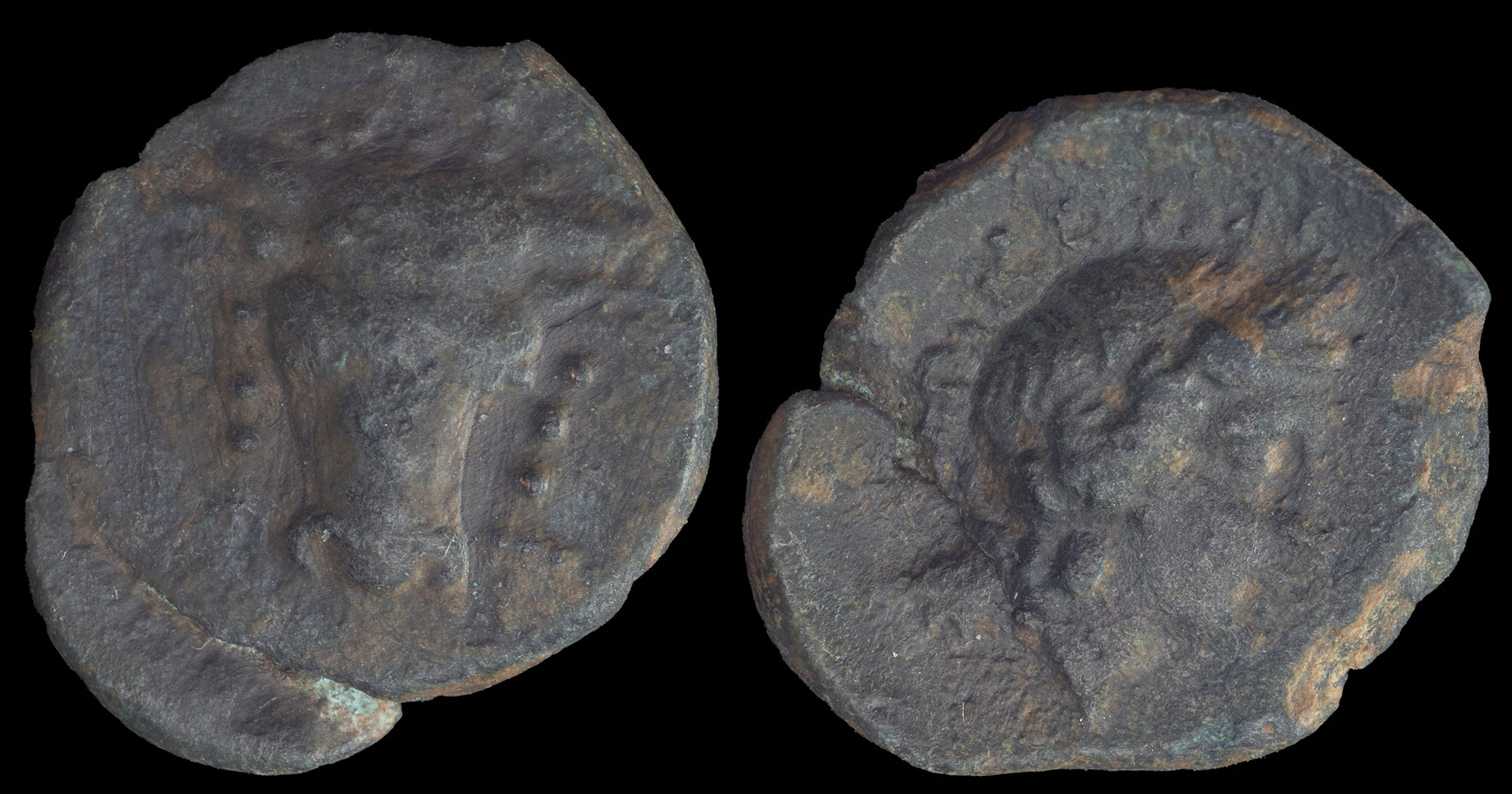
Phokis, Lilaia
ca 4th-3rd centuries BCE
Æ 19,3mm, 3.3g
Facing head of bull, wearing sacrificial fillet.
R/ Laureate head of Apollo right.
BCD Lokris-Phokis 442-4; HGC 4, 1156A
Lilaia was an ancient history that was mentioned in the Iliad and by Hesiod. It was mentioned by numerous ancient sources and was destroyed by Philip II in the Third Sacred War in 346 BCE. The city was then rebuilt.
Pausanias wrote:
In Lilaea are also a theater, an agora and baths. There is also a sanctuary of Apollo, and one of Artemis. The images are standing, of Attic workmanship, and of marble from the Pentelic quarries. They say that Lilaea was one of the Naides, as they are called, a daughter of the Cephisus, and that after this nymph the city was named. Here the river has its sources.
I have heard another account, that the water was a gift to Castalia from the river Cephisus. So Alcaeus has it in his prelude to Apollo. The strongest confirmation of this view is a custom of the Lilaeans, who on certain specified days throw into the spring of the Cephisus cakes of the district and other things ordained by use, and it is said that these reappear in Castalia.
Lilaea is a winter day’s journey distant from Delphi; we estimated the length of the road, which goes across and down Parnassus, to be one hundred and eighty stades. Even after their city had been restored, its inhabitants were fated to suffer a second disaster at the hands of the Macedonians. Besieged by Philip, the son of Demetrius, they made terms and surrendered, and a garrison was brought into the city, until a native of the city, whose name was Patron, united against the garrison those of the citizens who were of military age, conquered the Macedonians in battle, and forced them to withdraw under a truce. In return for this good deed the Lilaeans dedicated his statue at Delphi.
The ruins of the city, including a fair portion of its walls, are still extant.